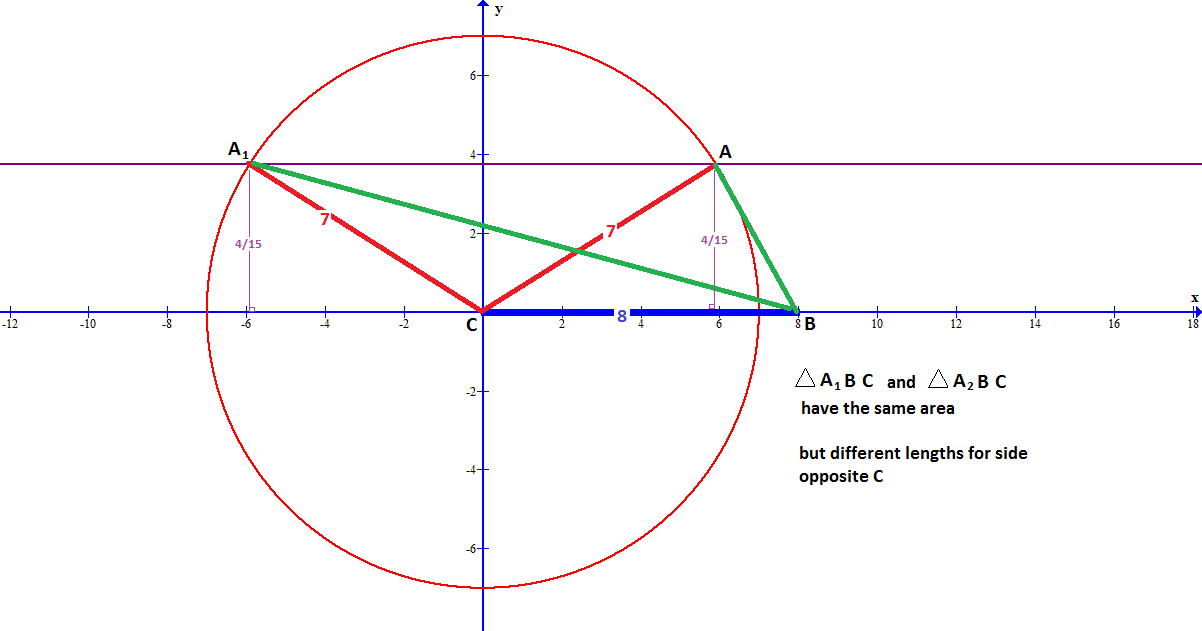Triangle A has an area of #15 # and two sides of lengths #8 # and #7 #. Triangle B is similar to triangle A and has a side with a length of #14 #. What are the maximum and minimum possible areas of triangle B?
2 Answers
Maximum possible area of triangle B = 60
Minimum possible area of triangle B = 45.9375
Explanation:
To get the maximum area of
Sides are in the ratio 14 : 7
Hence the areas will be in the ratio of
Maximum Area of triangle
Similarly to get the minimum area, side 8 of
Sides are in the ratio
Minimum area of
Maximum area:
Minimum area:
Explanation:
If
then
(See below for indication of how these values were derived).
Therefore
and a maximum side length of
For corresponding sides:
or equivalently
Notice that the greater the length of the corresponding
the smaller the value of
So given
and
and the maximum value for a corresponding side is
the minimum area for
Similarly, notice that the smalle the length of the corresponding
the greater the value of
So given
and
and the minimum value for a corresponding side is
the maximum area for
~~~~~~~~~~~~~~~~~~~~~~~~~~~~~~~~~~~~~~~~~~~~~~~
Determining possible lengths for
Suppose we place
Using this side as a base and given that the Area of
we see that the vertex opposite this side must be at a height of
If the side with length
(Note that the other end of the line of length
Substituting, we have
Giving possible coordinates:
We can then use the Pythagorean Theorem to calculate the distance to each of the points from
giving the possible values shown above (Sorry, details missing but Socratic is already complaining about the length).

